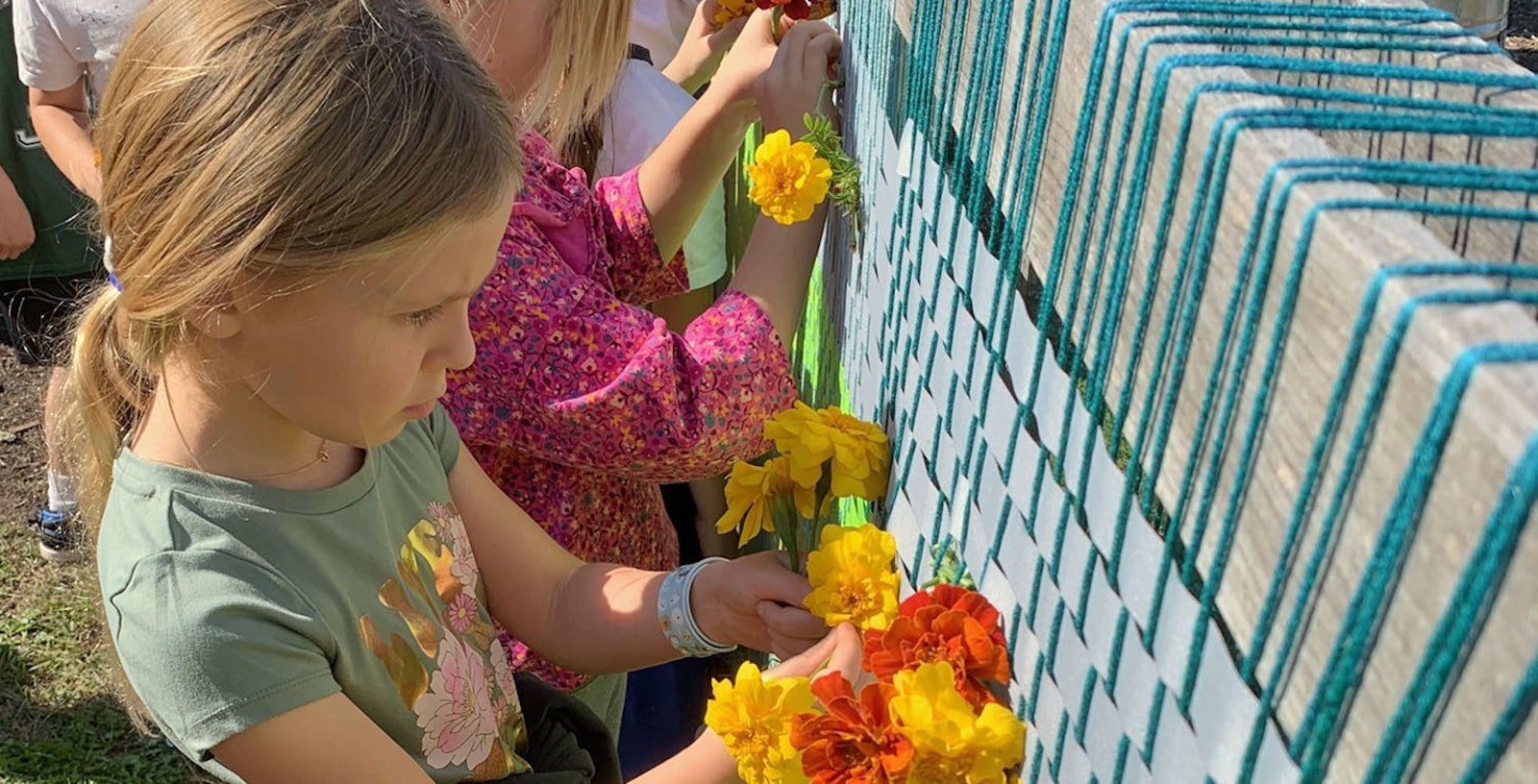You may think of marigolds, dill flowers, scallions, lemongrass, lemon verbena, garlic scapes, and bergamot as flowers and herbs, but to visitors at Amber Waves, a 30-acre community farm on New York’s Long Island, they are all weft options for an ephemeral weaving project. The weavers are often children who take part in the farm's outdoor classroom, where they learn about the land, farms, and how food is grown—as well what the word “ephemeral“ means.
 Weft options ready to be woven on Amber Waves Farm‘s loom.
Weft options ready to be woven on Amber Waves Farm‘s loom.
The loom is an old pallet fixed to the ground with tomato stakes. Sturdy yarn wrapped around it serves as a warp. Visiting children weave flowers, herbs, and other plants into the warp, along with ribbons, or strips of fabric they have dyed with local plants. The project is spearheaded by an Amber Waves classroom staffer who studied fiber art before becoming a farmer.
Textiles that we weave with cotton, silk, wool, or other typical fibers are meant to have a long life in the kitchen or as part of our wardrobes. By contrast, the weaving done at Amber Waves is by its very nature short-lived. Plant materials droop or mildew, and flowers lose their petals. And from week to week or month to month, as different plants and flowers grow and mature, the nature of what’s on the loom changes.
 Children learn about farming and weaving in the outdoor classroom.
Children learn about farming and weaving in the outdoor classroom.
This year‘s growing season is winding down now, but Amber Waves expects the project to carry on next year with new groups of students and new weft ideas. This fall, they plan to sow seeds for use in sweetgrass weaving next summer.

